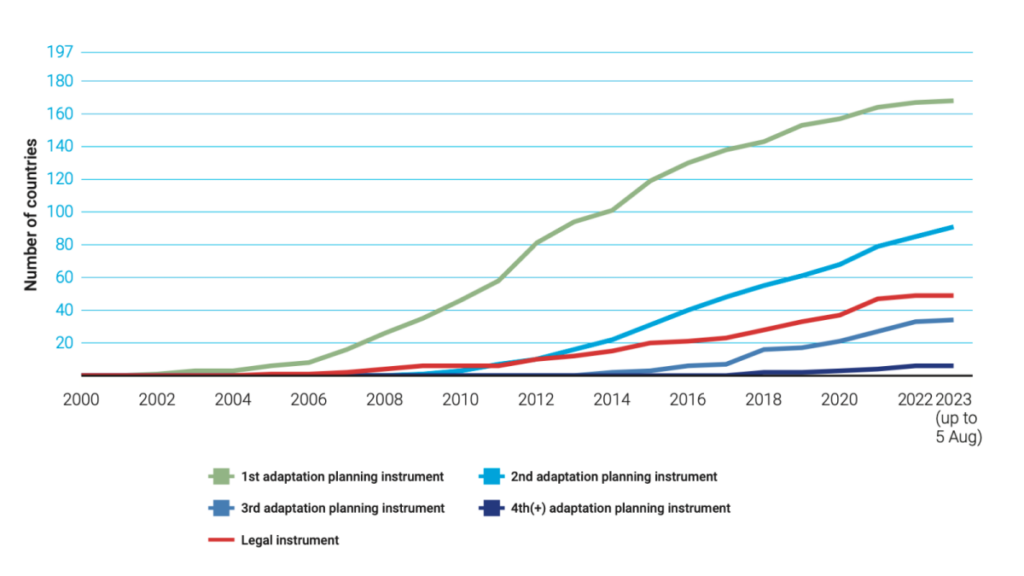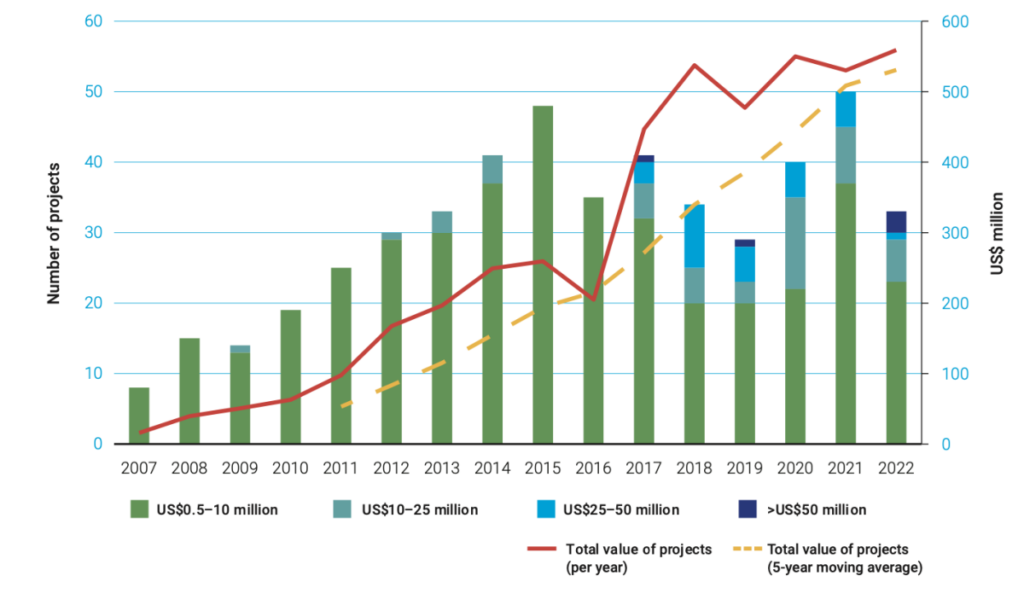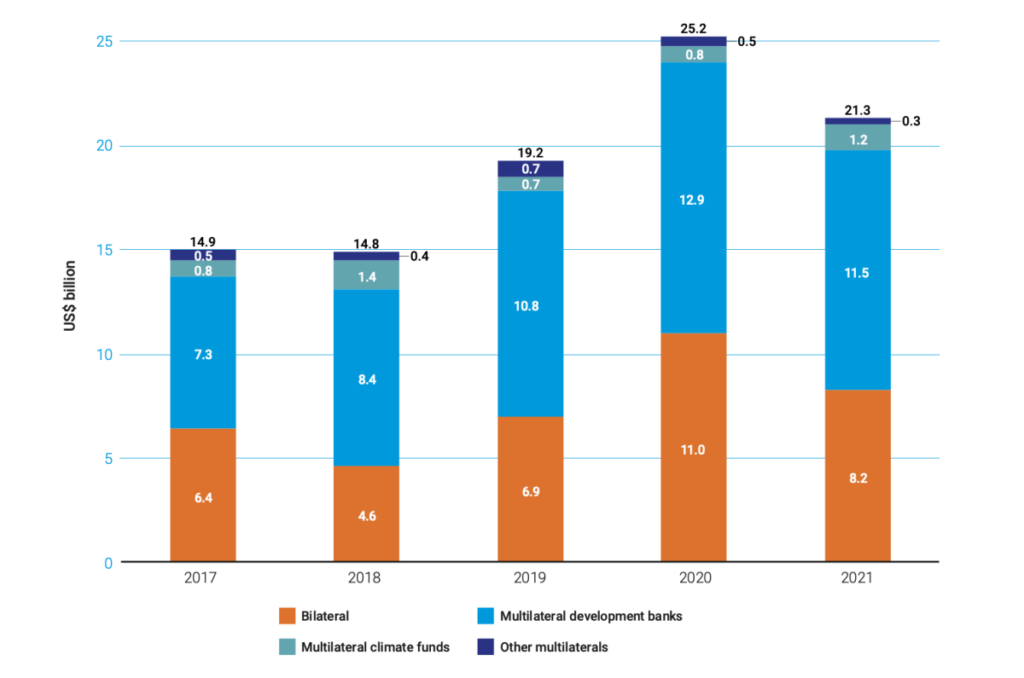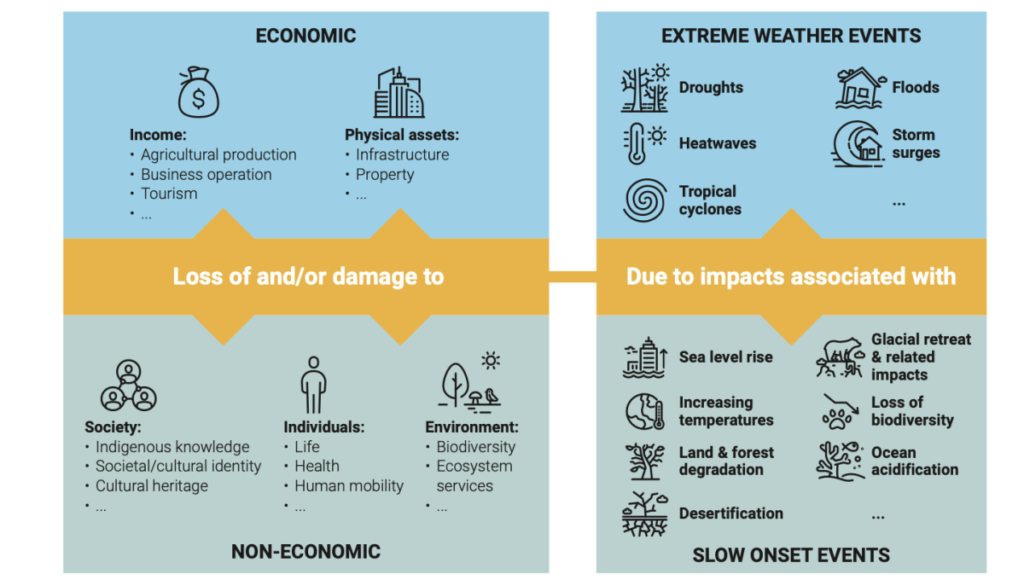Underfinanced. Underprepared. UNEP Adaptation Gap Report 2023.

Introduction
Are countries, societies and communities collectively on track to adapting to the global challenge of climate change?
To address this fundamental question, the Adaptation Gap Report (AGR) series investigates, on a yearly basis, how adaptation is planned, implemented and financed, to answer three linked questions, taking into account uncertainties and the limited data available:
- What has been done to adapt until today?
- To what extent are current adaptation action reducing climate risks today?
- Are current adaptation efforts likely to reduce future climate risks?
Making progress on addressing these three questions is critical as science increasingly warns about the need to consider climate risks in a more complex way. In addition to this, and from an international policy perspective, the conclusion of the AGR 2022 that the adaptation gap is widening calls for an increased focus on several topics underlying effective and adequate adaptation. These include governance arrangements, transparency of policy processes, capacity-building, technology transfer, finance and equity.
This article is an abridged version of the original text, which can be downloaded from the right-hand column. Please access the original text for more detail, research purposes, full references, or to quote text.
Global progress on adaptation planning
- 85% of countries have at least one national-level adaptation planning instrument in place. A rapid shift towards implementation and continued, iterative planning is vital – which must be supported by, among other things, greater availability of and access to finance.
- Of the 15% of countries that do not yet have a national planning instrument in place, just under half of these were found to be in the process of developing one. Reaching these remaining countries to help them finalize these processes will require additional support.
- Currently, 25% of countries have in place legal instruments that require national governments to prepare a national adaptation planning instrument. More countries should seek to prepare and adopt such instruments as a means of ensuring that adaptation planning is prioritized and that planning instruments are updated periodically.
- Since 2021, there has been a notable increase in the implementability of adaptation planning processes, with 69% of countries putting a central administrative body in place to oversee adaptation action and 67% allocating domestic finance towards implementing adaptation priorities.
- Less progress was observed on M&E, reflecting the difficulty of designing and implementing systems and processes for understanding the effectiveness of adaptation planning and action.
- While least developed countries and small island developing States are found to be in line with – or above – the global average for some of the criteria assessed, they appear to be lacking in certain areas recognized as contributing towards national adaptation planning being adequate and effective. This emphasizes the need for SIDS and LDCs to receive financial and technical support to advance their adaptation planning.

Global progress on adaptation implementation
- In 2022, new adaptation projects at a combined value of US$559 million in grants from the Adaptation Fund, the Green Climate Fund and the Global Environment Facility started implementation. This is 10% higher than the average amount implemented over the preceding five years (2017–2021).
- The average number of new adaptation projects that started under these three multilateral funds plateaued at just under 40 projects per year during the decade 2013–2022. Due to GCF, the average size of grant-funded adaptation projects has increased. Since 2017, an average of 15% of new adaptation projects have grant funding of over US$25 million.
- Over 1,100 implemented adaptation actions are listed by 35 countries in their adaptation communications. However, details are provided for just 670 actions (60%). Information on the outcomes of implementation was reported for only 6% of those 60%.
- 57% of stand-alone adaptation communications acknowledge that vulnerability differs across demographics, and a majority underscores the imperative of addressing gender inequality. However, only a third of actions targeted vulnerable groups. Of those that did, farmers were the most targeted vulnerable group, while women, fisherfolk and Indigenous Peoples were targeted marginally.
- Just over half of the actions for which a funding source was reported were funded by domestic sources. For developing countries, this proportion was one third. Stand-alone adaptation communications therefore provide a new source of information on domestically funded adaptation implementation.
- Three quarters of the developing countries that submitted a stand-alone adaptation communication received support for its compilation, demonstrating the importance of providing adequate support for adaptation reporting, especially for least developed countries and small island developing States.

Adaptation finance gap
- The costs of adaptation are estimated to be in a plausible central range of US$215–387 billion/year for developing countries this decade. This is a significant increase from the previous AGR estimate.
- An analysis of international public adaptation finance flows to developing countries estimates these at US$21 billion in 2021 – a 15% decrease compared to 2020.
- The adaptation finance gap has grown significantly since previous assessments. The estimated costs/needs of adaptation are now approximately 10–18 times as much as international public adaptation finance flows.
- A significant increase in international public adaptation finance is needed. However, any such increase is unlikely to bridge the adaptation finance gap on its own. For example, reaching the COP26 goal of doubling international public adaptation finance by 2025 would require an increase of 16% per year, but this would only close the adaptation finance gap by approximately 5–10%.
- Gender is only weakly included in adaptation finance. Of the international public finance for adaptation that is also tagged with gender equality as a principal marker, only 2 per cent is assessed as gender-responsive, with a further 25 per cent as gender-specific or gender integrative.
- In addition to increased international public adaptation finance, private-sector finance and domestic expenditure, several approaches can help bridge the gap. These include remittances, increased finance for small and medium-sized enterprises (SMEs), reform of the international financial system and the implementation of article 2.1(c) of the Paris Agreement.

Loss and damage
- In the United Nations Framework Convention on Climate Change (UNFCCC), loss and damage has emerged as a third key pillar of climate policy, alongside mitigation and adaptation, to address ever-increasing climate impacts in developing countries that are particularly vulnerable to the adverse effect of climate change.
- Losses and damages arise when efforts to avoid or minimize climate impacts through mitigation and adaptation fail. Given the slow progress of mitigating greenhouse gas emissions and of adapting to climate risks, some losses and damages are occurring, and further loss and damage is unavoidable.
- There is a broad typology of responses available for both economic and non-economic losses and damages that must all respect country ownership and be equitable, inclusive, accessible and adequate, but the lack of conceptual clarity is a clear barrier to making progress on loss and damage.
- Many uncertainties remain regarding the financial needs to address loss and damage, but innovative funding sources and governance structures must be found to reach the necessary scale.

Further resources
- Suggested citation:United Nations Environment Programme (2023). Adaptation Gap Report 2023: Underfinanced. Underprepared. Inadequate investment and planning on climate adaptation leaves world exposed. Nairobi. https://doi. org/10.59117/20.500.11822/43796
Related resources
- Adaptation Gap Report 2022
- Reflections on the IPCC AR6 Synthesis Report: adaptation, loss and damage
- Addressing Loss and Damage: What can we learn from countries’ National Adaptation Plans?
- Operationalizing Finance for Loss and Damage: from Principles to Modalities
- UNEP 2023 Adaptation Gap Report page
(0) Comments
There is no content